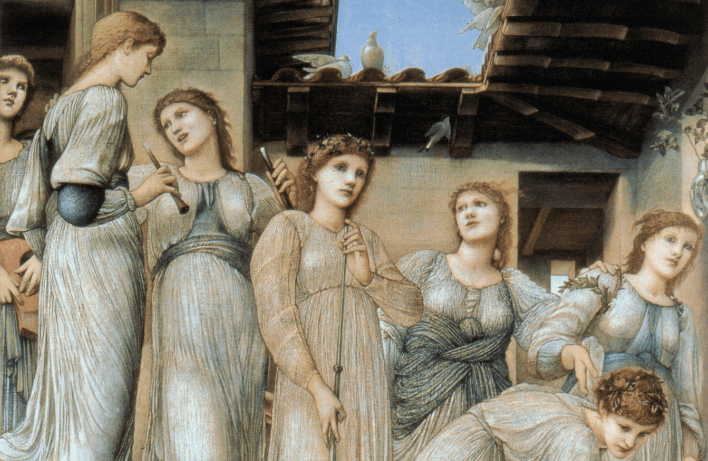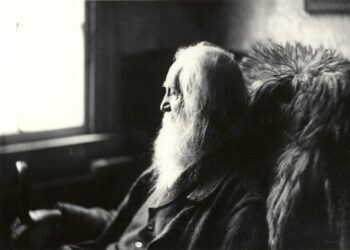Table of Contents
ToggleIntroduction
Ash Wednesday Summary And Themes By T. S. Eliot T. S. Eliot’s Ash Wednesday is one of his most profound and introspective works, marking a significant turning point in his poetic career. Written in 1930 after his conversion to Anglicanism, the poem reflects Eliot’s exploration of faith, repentance, and spiritual transformation. It is a deeply personal work, infused with the themes of spiritual struggle, human frailty, and the quest for divine grace.
Ash Wednesday is often described as a meditation on the journey from doubt to faith. Drawing heavily on Christian symbolism and liturgical references, the poem mirrors Eliot’s spiritual awakening and his attempt to reconcile the complexities of modern life with his newfound religious devotion. The title itself refers to the beginning of Lent, a period of repentance and preparation in the Christian liturgical calendar, setting the tone for the poem’s contemplative and penitential nature.
Summary of Ash Wednesday
Ash Wednesday consists of six sections, each exploring a different aspect of the speaker’s spiritual journey. Below is a detailed summary of each section:
Section I
The poem opens with the speaker acknowledging his spiritual failure and expressing a longing for divine grace. He reflects on the futility of earthly ambitions and the weariness that comes from striving for worldly success. The repeated line, “Because I do not hope to turn again,” conveys a sense of resignation and an awareness of his need for spiritual renewal.
The speaker confronts his own limitations and doubts, seeking solace in the possibility of redemption. This section sets the tone for the rest of the poem, establishing the themes of repentance and the struggle to embrace faith.

Section II
In this section, the speaker’s focus shifts to the Virgin Mary as a symbol of intercession and grace. The imagery becomes more ethereal and abstract, reflecting the speaker’s attempt to transcend the material world. He prays for spiritual guidance and strength to resist temptation, recognizing the importance of humility in the journey toward God.
The section explores the tension between the speaker’s earthly attachments and his desire for spiritual purity. This inner conflict is expressed through fragmented, layered imagery that underscores the difficulty of abandoning worldly desires.
Section III
The third section is marked by a sense of yearning and struggle. The speaker reflects on the barrenness of his spiritual state, likening it to a desert landscape. This imagery echoes biblical references to the wilderness as a place of trial and transformation.
Despite his struggles, the speaker remains committed to seeking redemption. The tone is one of perseverance and hope, as he acknowledges the necessity of suffering and self-discipline in achieving spiritual growth.
Section IV
The fourth section introduces a vision of renewal and grace. The imagery becomes more luminous and uplifting, suggesting the possibility of divine intervention. The speaker’s prayers and meditations begin to bear fruit, as he experiences moments of spiritual clarity and peace.
This section reflects Eliot’s belief in the transformative power of faith and the importance of submission to God’s will. The speaker begins to accept his limitations, finding solace in the assurance of divine mercy.
Section V
In the penultimate section, the speaker reflects on the fleeting nature of earthly life and the eternal nature of the soul. He contrasts the transience of human existence with the timelessness of divine truth, emphasizing the importance of focusing on spiritual realities.
The imagery in this section is rich and symbolic, drawing on Christian theology and liturgical practices. The speaker’s tone is one of reverence and gratitude, as he recognizes the beauty and mystery of God’s creation.
Section VI
The final section brings the poem to a contemplative conclusion. The speaker’s tone is more serene and accepting, as he embraces his role as a humble servant of God. The imagery evokes a sense of harmony and unity, reflecting the speaker’s reconciliation with his spiritual path.
The poem ends with a prayer for divine grace and a reaffirmation of the speaker’s commitment to his faith. This closing section encapsulates the central message of the poem: the possibility of redemption and renewal through humility, perseverance, and trust in God.Ash Wednesday Summary And Themes By T. S. Eliot
Themes in Ash Wednesday
1. Spiritual Struggle and Transformation
At its core, Ash Wednesday is a meditation on the process of spiritual renewal. The speaker’s journey from doubt to faith reflects the universal struggle to reconcile human frailty with the desire for divine grace. Eliot captures the tension between the material and the spiritual, illustrating the challenges of letting go of worldly attachments.
Read more
2. The Role of Prayer and Intercession
Prayer plays a central role in the poem, serving as both a means of communication with God and a source of strength for the speaker. The invocation of the Virgin Mary highlights the importance of intercession and the belief in divine assistance during times of spiritual trial.Ash Wednesday Summary And Themes By T. S. Eliot
3. Repentance and Humility
Repentance is a recurring theme in Ash Wednesday, as the speaker confronts his sins and seeks forgiveness. Eliot emphasizes the importance of humility in the spiritual journey, portraying it as a prerequisite for redemption and renewal.Ash Wednesday Summary And Themes By T. S. Eliot
4. The Journey Toward Redemption
The poem reflects the cyclical nature of the journey toward redemption, with moments of doubt and despair followed by hope and clarity. This theme underscores Eliot’s belief in the possibility of spiritual growth, even in the face of adversity.Ash Wednesday Summary And Themes By T. S. Eliot
5. The Interplay Between Time and Eternity
Eliot contrasts the fleeting nature of earthly life with the eternal nature of the soul, highlighting the importance of focusing on spiritual truths. This theme is expressed through the imagery of transience and permanence, as the speaker seeks to align himself with the eternal will of God.Ash Wednesday Summary And Themes By T. S. Eliot
Analysis of Ash Wednesday
1. Structure and Form
The poem’s six sections mirror the stages of the speaker’s spiritual journey, creating a sense of progression and development. Eliot’s use of free verse allows for a fluid, meditative rhythm that reflects the introspective nature of the poem.Ash Wednesday Summary And Themes By T. S. Eliot
Read more
2. Imagery and Symbolism
Eliot’s imagery is rich and layered, drawing on Christian theology, biblical references, and liturgical practices. The desert, the Virgin Mary, and the ladder are recurring symbols that evoke themes of trial, grace, and spiritual ascent.Ash Wednesday Summary And Themes By T. S. Eliot
3. Tone and Voice
The tone of the poem evolves from despair and resignation to hope and acceptance, mirroring the speaker’s spiritual transformation. Eliot’s use of fragmented, allusive language creates a sense of depth and complexity, inviting readers to engage with the poem on multiple levels.
4. Intertextuality
Eliot’s poetry is known for its intertextuality, and Ash Wednesday is no exception. The poem references Christian liturgy, Dante’s Divine Comedy, and other literary and theological works, enriching its themes and imagery.Ash Wednesday Summary And Themes By T. S. Eliot

Conclusion
T. S. Eliot’s Ash Wednesday is a profound exploration of the human spirit’s longing for redemption. Through its vivid imagery, introspective tone, and theological depth, the poem captures the complexities of faith and the transformative power of divine grace.Ash Wednesday Summary And Themes By T. S. Eliot
Eliot’s ability to articulate the struggle between doubt and belief makes Ash Wednesday a timeless meditation on the challenges and rewards of the spiritual journey. For readers seeking to understand the intersections of literature, faith, and human experience, this poem remains an enduring and essential work.Ash Wednesday Summary And Themes By T. S. Eliot
Read more
FAQs
1. What is the significance of the title?
The title refers to Ash Wednesday, the first day of Lent in the Christian liturgical calendar. It symbolizes repentance, humility, and the beginning of a spiritual journey.
2. How does Ash Wednesday reflect Eliot’s faith?
The poem reflects Eliot’s personal struggle to embrace his Christian faith. It explores themes of repentance, grace, and spiritual transformation, mirroring his own journey toward religious conviction.
3. What are the key symbols in the poem?
Key symbols include the desert (representing spiritual barrenness), the ladder (symbolizing ascent toward God), and the Virgin Mary (a figure of intercession and grace).
4. Why is the poem considered challenging to read?
The poem’s fragmented structure, allusive language, and complex imagery can make it challenging to interpret. However, its depth and richness reward careful reading and reflection.
5. What is the central message of the poem?
The central message of Ash Wednesday is the possibility of redemption and renewal through faith, humility, and perseverance.

















